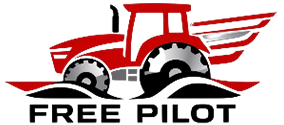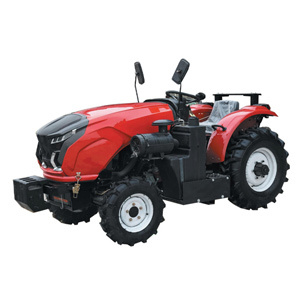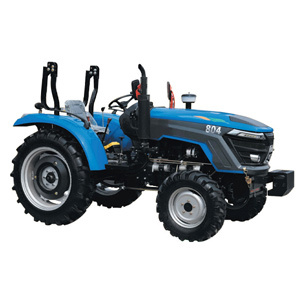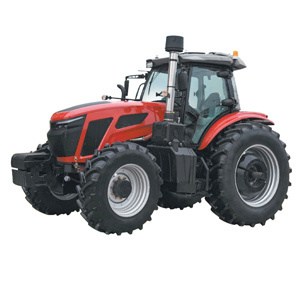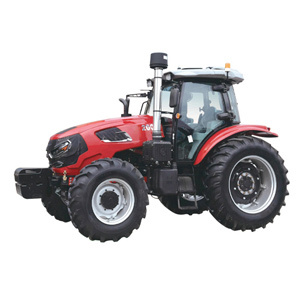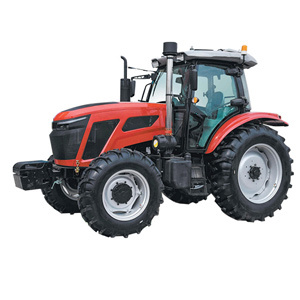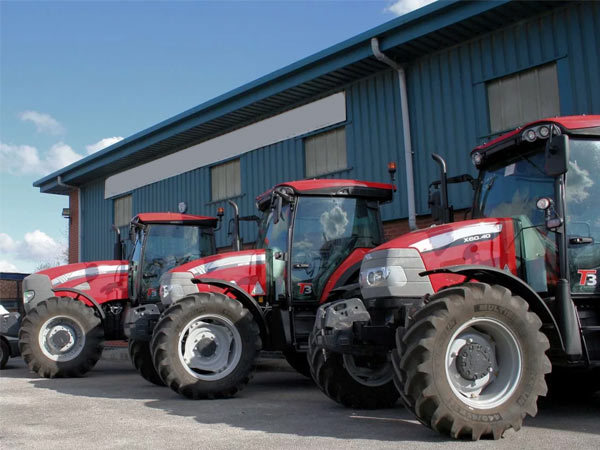Providing you with a one-stop solution for tractors
Is Maintenance Cost Written in the Specs? How to Predict Long-Term Tractor Costs from Configuration Data
Release time:
2025-11-18
Savvy farm managers know that a tractor's true cost isn't its purchase price, but its Total Cost of Ownership (TCO) over years of service. While unpredictable breakdowns happen, a significant portion of your future maintenance budget is not a mystery—it's hidden in plain sight within the initial configuration data. By learning to read these signs, you can make a purchase that saves you thousands in the long run.
1. The Hydraulic System: The "High-Pressure" Cost Center
The complexity and type of hydraulic system are major predictors of future service costs.
The Predictive Spec: Pump Type & Number of Valves
Fixed-Displacement Gear Pump: A simple, robust, and lower-cost initial option. However, it runs constantly at maximum flow, diverting excess oil back to the tank, wasting engine horsepower and fuel. This inefficiency is a constant, burning cost. It also generates more heat, which degrades oil and seals faster.
Variable-Displacement Load-Sensing Pump (The Cost-Saver): A more advanced and initially more expensive system. It only produces the flow and pressure demanded by the implement. This dramatically reduces fuel consumption and heat generation.
The Cost Forecast: A tractor with a Load-Sensing system will have lower long-term fuel costs and reduced stress on the entire hydraulic system, leading to fewer leaks and longer intervals between oil changes. The initial investment pays back in operational savings.
2. The Air Filtration System: Your Engine's Health Insurance
A cheap, undersized air filter is a false economy that your engine will pay for.
The Predictive Spec: Filter Size & Serviceability
Basic, Small Canister: Holds less dust, requires more frequent and stressful changes. A clogged filter leads to power loss and increased fuel consumption.
Large, Cyclonic Pre-Cleaner & Easy-Service Design: A large, pleated primary filter, often paired with a cyclonic pre-cleaner that spins out 90% of dust before it even reaches the filter, is a hallmark of a quality machine. A see-through dust cup and easy-access latches make routine checks and changes quick and painless.
The Cost Forecast: A superior filtration system extends service intervals by hundreds of hours, protects your engine from abrasive wear (preventing costly overhauls), and maintains optimal fuel efficiency. This single spec can save you thousands in potential engine repairs.
3. The Drivetrain: Sealed vs. Serviceable
How the final drives and axles are lubricated dictates long-term reliability and maintenance hassle.
The Predictive Spec: Final Drive & Axle Design
"Wet" vs. "Dry" Brakes: Oil-immersed "wet" disc brakes are sealed inside the axle housing, running in the same oil that lubricates the planetary gears. They are self-lubricating, self-cleaning, and last the life of the tractor under normal use. "Dry" brakes are exposed to dirt and moisture, wear faster, and require regular adjustment and replacement.
Planetary Final Drives: As discussed before, their presence is key. But their sealing is what prevents costly failures. Look for robust, labyrinth-style seals to keep oil in and contaminants out.
The Cost Forecast: A spec sheet highlighting oil-immersed brakes and sealed planetary axles predicts minimal brake maintenance and a drastically reduced risk of a $10,000+ final drive failure due to dirt ingress or lack of lubrication.
4. The Electronics & Electrical System: The Complexity Trade-Off
Simplicity often equals lower long-term costs.
The Predictive Spec: Fuse Box vs. Centralized ECU
Discrete Wiring & Fuses: A simpler system is easier and cheaper for a mechanic to diagnose and repair. A blown fuse is a $1 fix.
Centralized Electronic Control Units (ECUs): While enabling precision and efficiency, they are expensive to replace. A failure in a main ECU can immobilize the tractor and cost thousands for the part alone, plus specialized diagnostic labor.
The Cost Forecast: While modern electronics are reliable, their failure modes are far more costly. A tractor with a balance of smart electronics and user-serviceable components (like accessible fuses and relays) offers a better long-term cost profile than one that is overly reliant on a single, complex "black box."
Conclusion: Your TCO Checklist
Before you buy, turn the spec sheet into a cost-prediction tool. Ask these questions:
Hydraulics: Is it a Load-Sensing system? (Predicts lower fuel and repair costs)
Filtration: Does it have a large, service-friendly air filter with a pre-cleaner? (Predicts engine longevity and fuel efficiency)
Drivetrain: Does it feature oil-immersed brakes and sealed planetary axles? (Predicts minimal brake and final drive maintenance)
Electrics: Is the system a good blend of smart tech and user-serviceable simplicity? (Predicts manageable repair bills)
RELATED BLOG
